Borneo Wildlife: What Animals Live in Borneo?
Borneo Wildlife: What Animals Live in Borneo?
Borneo animals thrive in one of the world's most biodiverse environments. Nestled in South East Asia, the island of Borneo boasts an impressive array of wildlife that will leave nature enthusiasts awe-inspired.
From the lush rainforests to the crystal-clear waters, this biodiverse paradise is home to a stunning variety of creatures, including some you won’t find anywhere else. One such unique sub-species is the Borneo pygmy elephant, which can be spotted in key locations like the Kinabatangan River.
At Regent, we’re the experts in all things unknown, be it remote places or obscure species, so this guide will help you navigate Borneo’s endemic species and rich natural scenery within which they thrive. From the iconic orangutans swinging through the treetops to the elusive clouded leopards (the biggest predator in Borneo) prowling the forest floor, we’ll direct you to some of the island’s most fantastic animals.
Learn more about the wild side of Sarawak with Sarawak Tourist Board

There’s a staggering diversity of wildlife within Borneo’s mountainous centre. To date, and to our knowledge, there are 10 primate species, over 350 endemic bird species, and 150 reptile and amphibian species to discover.
Amongst this tapestry of unique wildlife, there are a few stars of the show that are simply must-sees, including the big five animals of Borneo:
- Orangutans
- Proboscis Monkeys
- Borneo Pygmy Elephants
- Hornbills and Other Birds
- Flying Squirrels
- Saltwater Crocodiles
- Sun bears
- Bearded pigs
- Slow Loris
- Water monitors
- Snakes
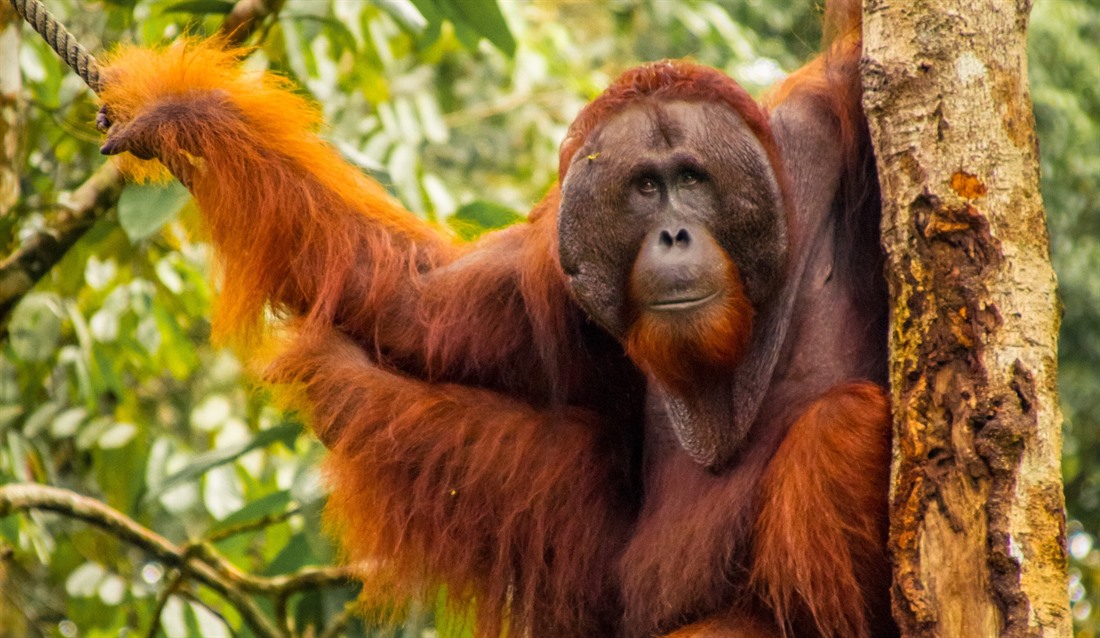
Mammals of Borneo
Orangutans
The wild orangutan, Asia’s only great ape and the biggest tree-climbing mammal, knows how to entertain the crowds with tree trunk climbing, swift branch-to-branch swinging, and general aping around! As Borneo's national animal, the orangutan holds a special place in the region’s wildlife heritage.
Approximately one-third of the orangutan population was lost during the 1997/98 forest fires that devastated Kalimantan (Indonesian Borneo), so it’s an extra special event to see them in action, especially as a big five animal.
The jungles of Danum Valley Conservation Area and Tabin Nature Reserve are some of the best regions to explore in Sabah, as local guides know the habits and movements of resident wild orangutan families well. Boat trips down the Kinabatangan River also often spot orangutans swinging in the trees that overhang the water.
Batang Ai in Sarawak is slightly further from the beaten track, so trekking here suits travellers searching for an ‘authentic explorer’ experience where wild orangutans are less used to human visitors.
Click here to find out more about our 14-day Borneo Orangutan Experience tour.
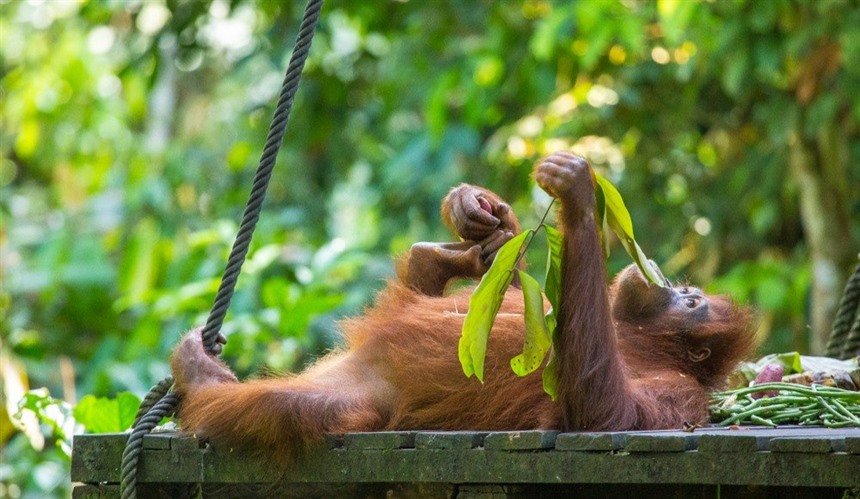
Orangutans in conservation
The good news is, no matter which state in Borneo you choose to visit, both Sabah and Sarawak are home to brilliant orangutan conservation centres. These schemes care for orphaned or injured orangutans and prepare them for release back into wild forest habitats.
In Sabah, we recommend visiting the Sepilok Orangutan Rehabilitation Centre and in Sarawak, the Semenggoh Wildlife Centre is our top choice. While it’s never quite the same as seeing these creatures in the wild, these centres allow you a closer peek at orangutan social interactions and intelligence as they play and feed.
Our 13-day Borneo for Beginners tour visits Sepilok Orangutan Rehabilitation Centre.
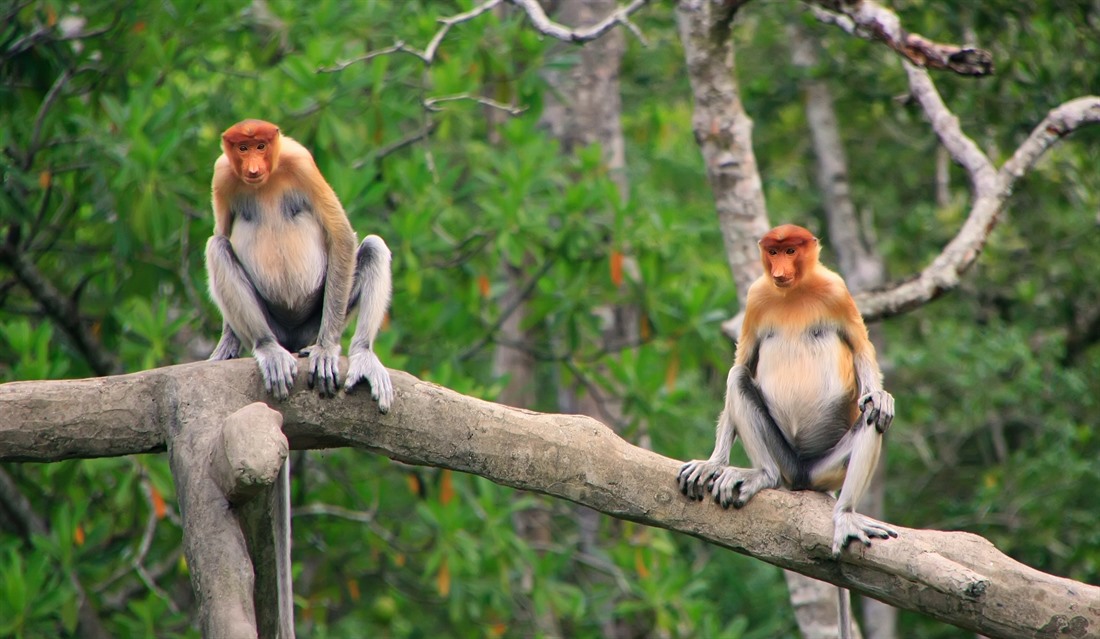
Proboscis Monkeys
Proboscis monkeys are one of the most recognisable and beloved animals in Borneo, and known for being one of the big five animals in Borneo.
These large, orange-brown primates are known for their distinctive noses, which can grow up to 10 cm long in males. These unique noses are not just for show; they play a crucial role in attracting mates and amplifying the monkeys’ calls. Found only in Borneo, proboscis monkeys are considered an endangered species due to habitat loss and hunting.
These fascinating creatures are herbivores, primarily feeding on leaves, fruits, and seeds. They thrive in mangrove forests, riverine forests, and lowland forests, often seen along the banks of the Kinabatangan River and in Bako National Park.
Proboscis monkeys are social animals, living in harems led by a dominant male. Watching these groups interact, especially during sunrise and sunset river cruises, is a highlight for many visitors to Borneo.
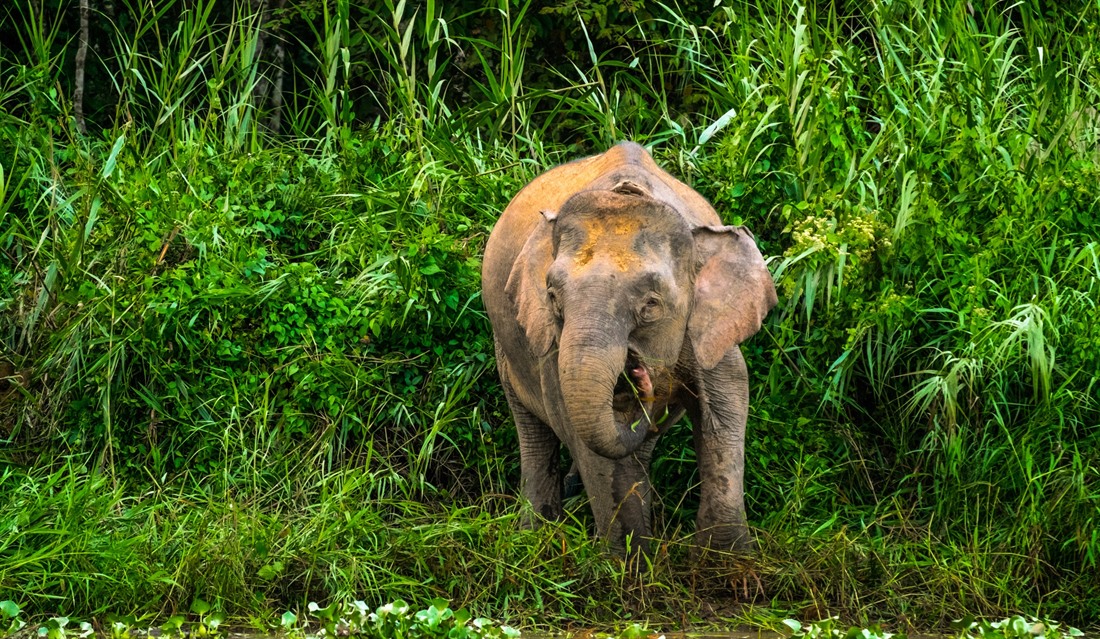
Borneo Pygmy Elephants
Borneo pygmy elephants are a unique subspecies of the Asian elephant, mostly found in the northeastern part of Borneo.
These gentle giants are smaller than their mainland Asian relatives, with males reaching a height of 2-3m and weighing up to 5,000kg. Despite their smaller size, Borneo pygmy elephants are incredibly strong and play a vital role in their ecosystem by dispersing seeds and creating clearings in the forest. They’re well known amongst the local community for being one of the big five Borneo animals.
These elephants are herbivores, feeding on a variety of vegetation, including grasses, leaves, and fruits. They inhabit lowland forests and river valleys, often seen in areas like the Deramakot Forest Reserve, Danum Valley, Tabin and along the Kinabatangan River.
Borneo pygmy elephants are social animals, living in herds led by a female matriarch. Sadly, there are only around 2,000 Borneo pygmy elephants left in the wild, making them an endangered species. Conservation efforts are crucial to ensure their survival and protect their natural habitats.
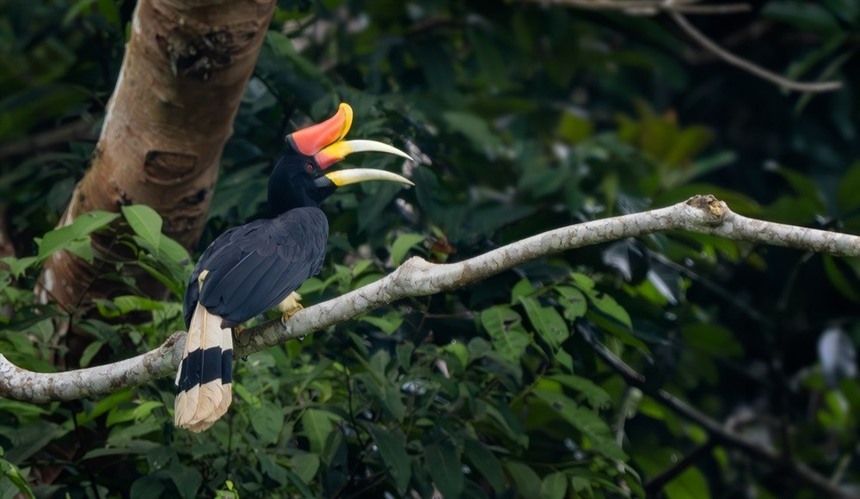
Birds of Borneo
Hornbills and Other Birds
Borneo is a birdwatcher’s paradise, with over 420 species of birds found on the island. Among the most iconic and sought-after birds are the hornbills.
There are eight species of hornbills in Borneo, including the magnificent rhinoceros hornbill (one of the big five animals of Borneo), the Oriental pied hornbill, and the Asian black hornbill.
These birds are known for their distinctive casques, which are made of keratin and can grow up to 30 cm long. Hornbills are found in lowland and montane forests and play a crucial role in Borneo’s ecosystem by dispersing seeds and maintaining forest health.
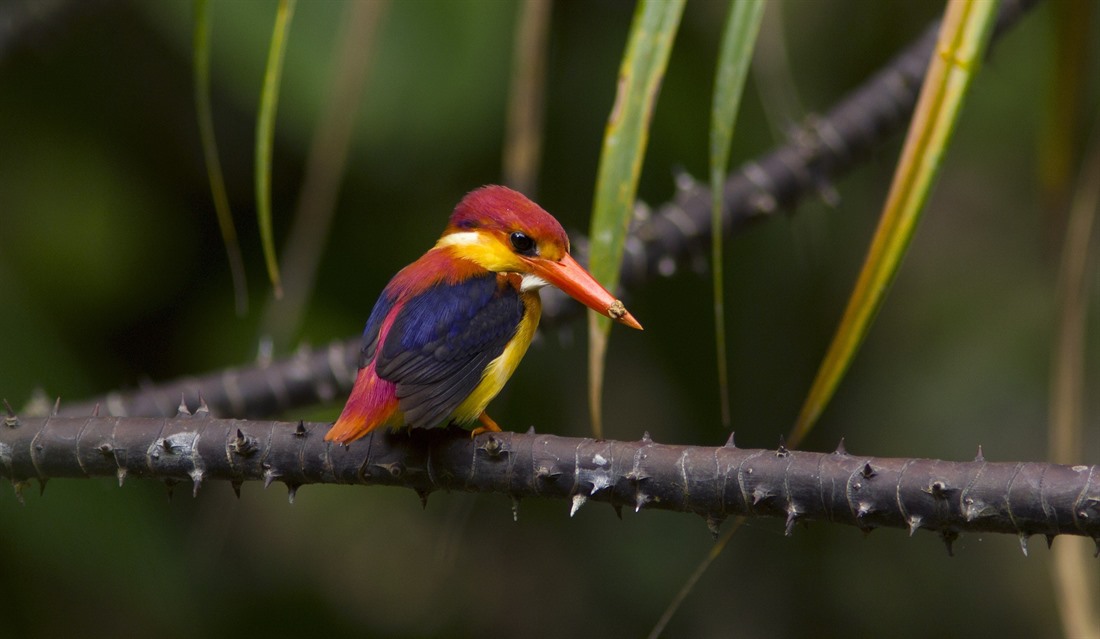
Where to See Birds in Borneo?
Some of the best places to see birds in Borneo include the Danum Valley Conservation Area, the Kinabatangan River, and the Rainforest Discovery Centre. These areas offer a range of habitats, from lowland forests to montane forests, and are home to a wide variety of bird species.
The Borneo Rainforest Lodge, located in the heart of the Danum Valley, is an excellent base for birdwatchers, offering guided tours and canopy walks to spot these incredible creatures.
However, the destruction of habitats due to palm oil plantations and other human activities poses a significant threat to Borneo’s bird population. Conservation efforts are underway to protect the remaining forests and wildlife, but more needs to be done to ensure the long-term survival of these incredible birds.
Overall, Borneo is a birdwatcher’s paradise, with a wide range of species found on the island.
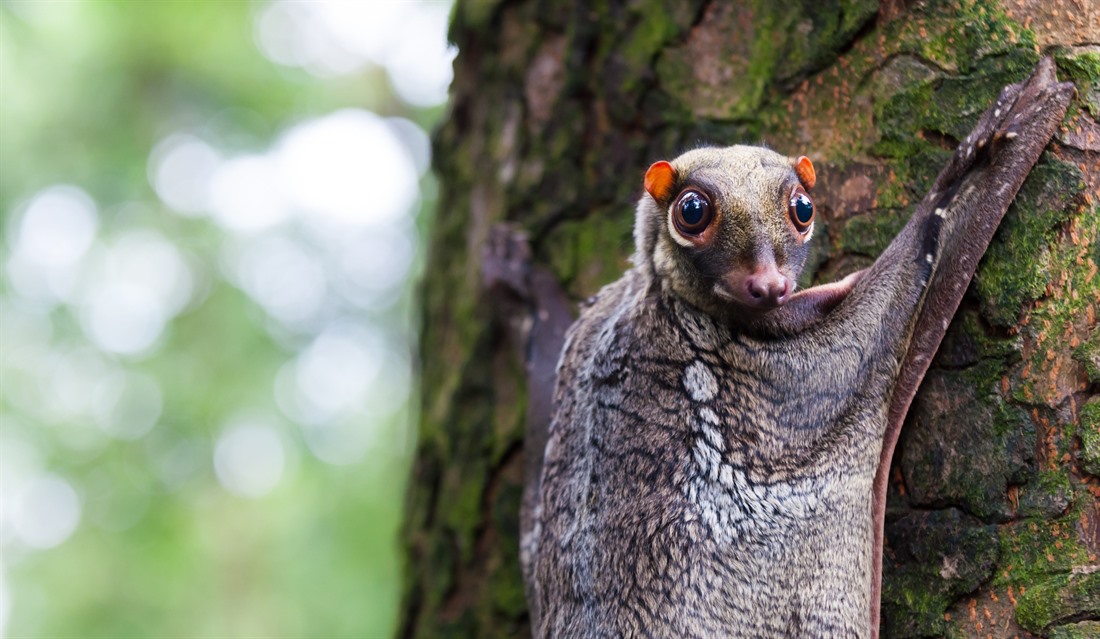
Reptiles and smaller creatures
Flying squirrels
On a smaller scale, and therefore requiring a sharper eye to spot them, Borneo abounds with squirrels, including the incredible flying squirrel, of which there are 12 known species in Borneo.
These winged creatures go about their business at night, so you will have to stay up late to see them! You’re quite likely to see flying squirrels if you stay at the MY Nature Resort, particularly at sunset, where a few live in the trees on the hotel grounds.
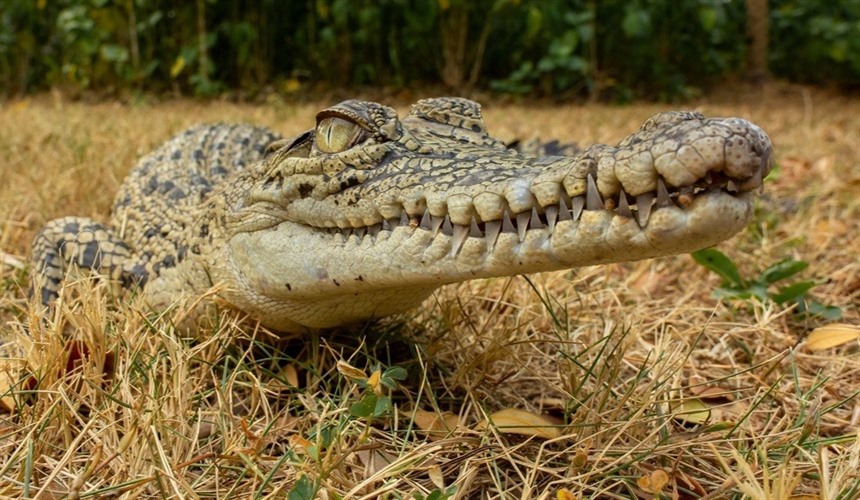
Saltwater crocodiles
The giant saltwater crocodile is just that – giant, and known for being one of the big five animals of Borneo. At full growth, the crocodile can be 20ft long, and weigh over half a ton, earning it the title of the world’s biggest reptile. They tend to stick to the rivers of the jungle, so you might see them leaping up from above the surface to gobble some prey, but they won’t be in your territory.
Are there any dangerous animals in Borneo?
None that are dangerous to you, as you won’t be getting too close to any animals, but some do have their vices and the Bornean locals tend to steer clear. You may see some dangerous animals from a distance on your travels, and it can be quite thrilling to see these fearsome creatures in action. Here are some to watch out for.
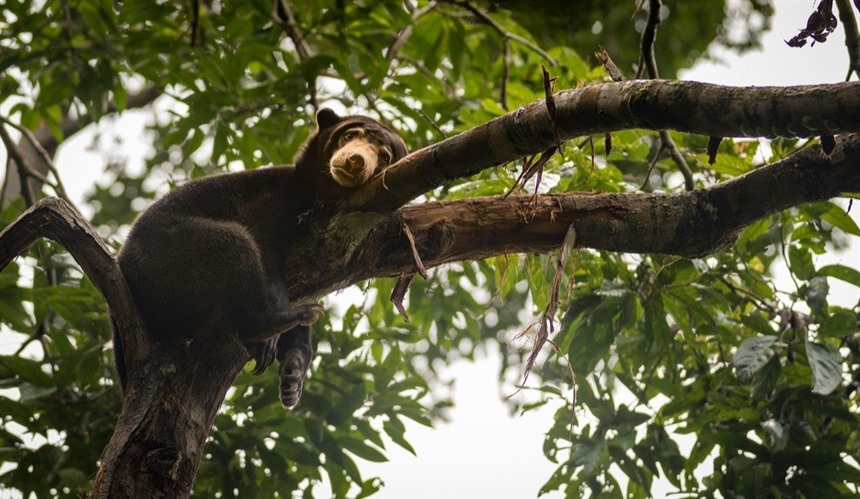
Sun bears
Sun bears, or ‘honey bears', can look quite cute with their small round faces, gold-patched chests, and playful nature, but their long teeth and sharp claws can do considerable damage to their prey. Luckily, they live high up in the trees, and save their hunting until night as they're nocturnal animals, so your daytime, local guide-led adventures are safe.
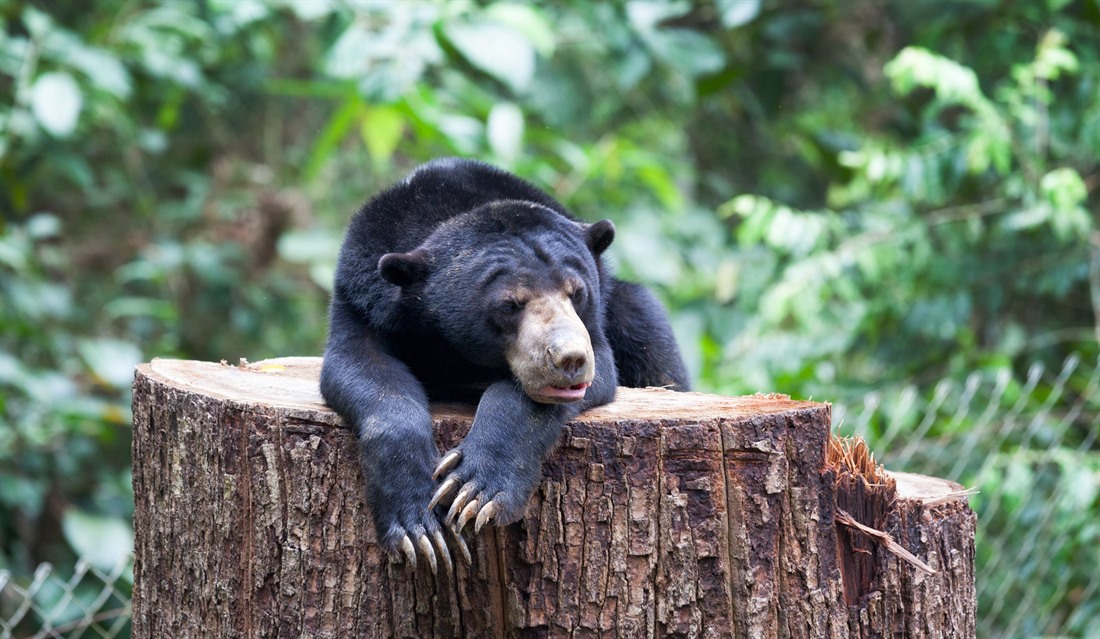
Sun bears in conservation
However, in the wake of deforestation for plantations across Borneo, sun bears have lost a lot of their natural habitat and, with populations in rapid decline, can be very hard to spot in the wild.
Rare sightings have been known at Tabin Wildlife Reserve – Travel Specialist Marianne spotted a mother and baby crossing the road on a night wildlife drive in 2016. The Borneo Sun Bear Conservation Centre is an option, allowing you to see bears in large, protected areas of forest.
Explore Tabin Wildlife Reserve on our 17-day Essential Sarawak & Sabah tour
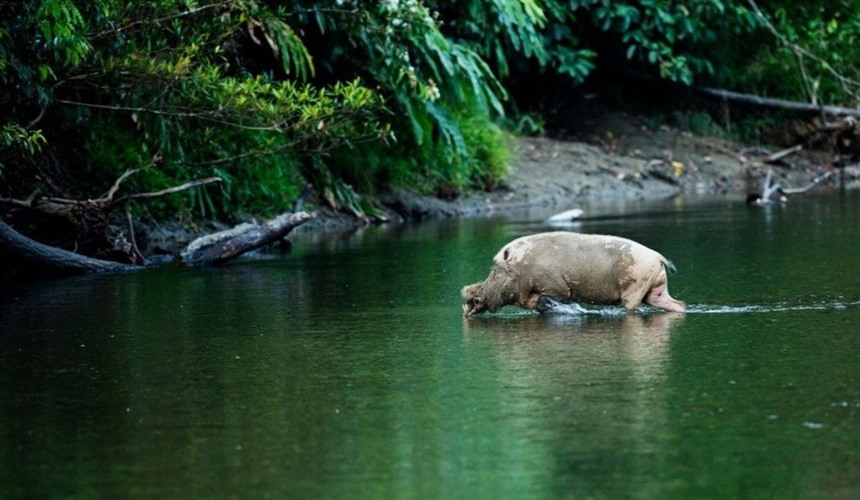
Bearded pigs
Bearded pigs are kept very busy in Borneo, contributing hugely to the island's biodiversity.
As they hunt for food, they disperse seeds all over the island to promote growth and reshape the soil to help it thrive and break down waste. This work takes place mostly in the forest, and you might see them at Bako National Park. They can often be seen wandering along the beach here, and around the guest cottages.
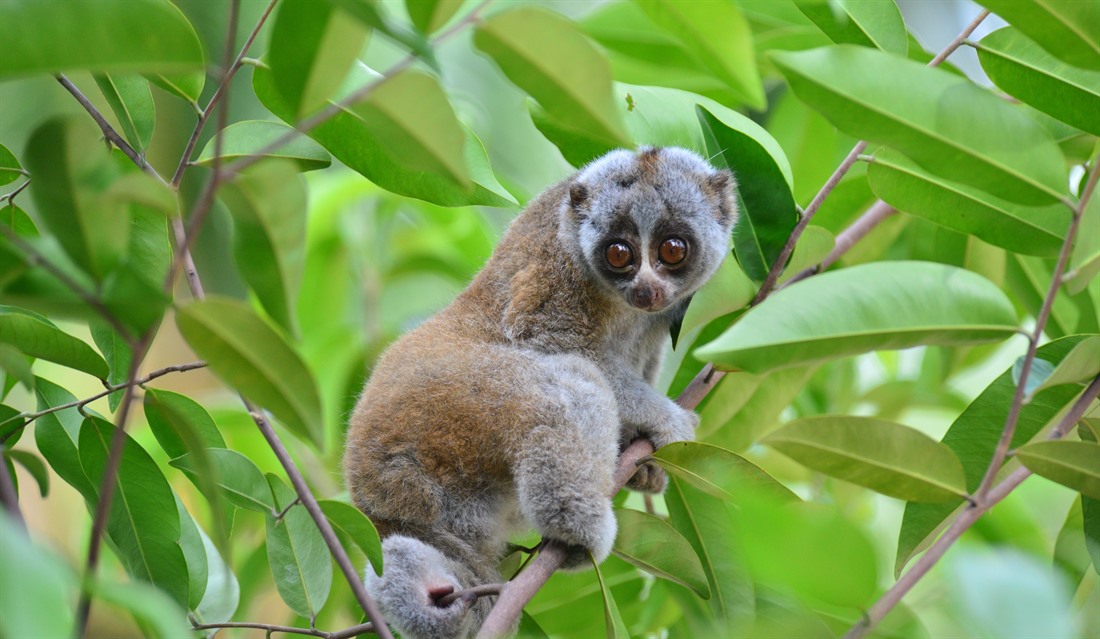
Slow Loris
With endearing bug eyes, the tiny, fluff-covered slow loris is seemingly adorable. However, they're actually venomous, and you mustn't go near them.
There are many superstitions surrounding the slow loris; some believe they can see ghosts; some think they are a bad or good omen and, several hundred years ago, the locals worshipped them as gatekeepers of the afterlife! Sadly, their numbers have been depleting over recent years, so you're very lucky if you spot one, especially considering their cultural significance.
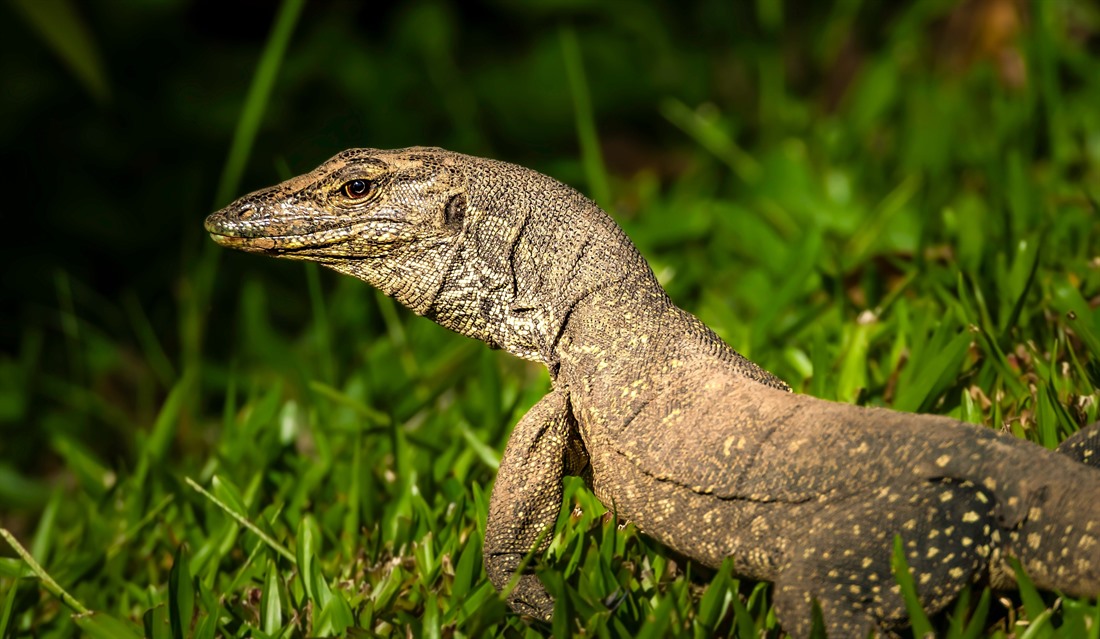
Water monitors
Scaly water monitors slink through Borneo's swamps, forests and canals, preying on crabs, snakes, and even small crocodiles. Though a threat to their peers, they're incredibly shy around humans and, as the saying goes, they're more scared of you than you are of them!
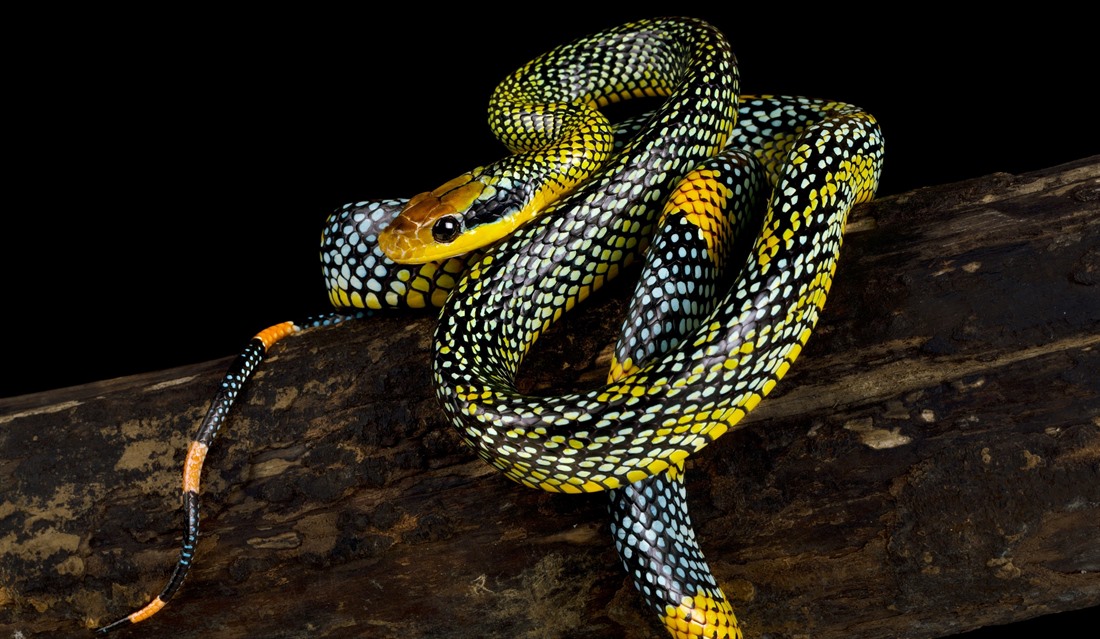
Snakes
Amazingly, there are around 160 snake species in Borneo. The vast majority are harmless, but there are 24 species of venomous snakes, the most dangerous of which is the yellow-lipped sea krait. All of Borneo's snakes are very reserved and unused to human company, so they'll vigilantly avoid your footsteps.
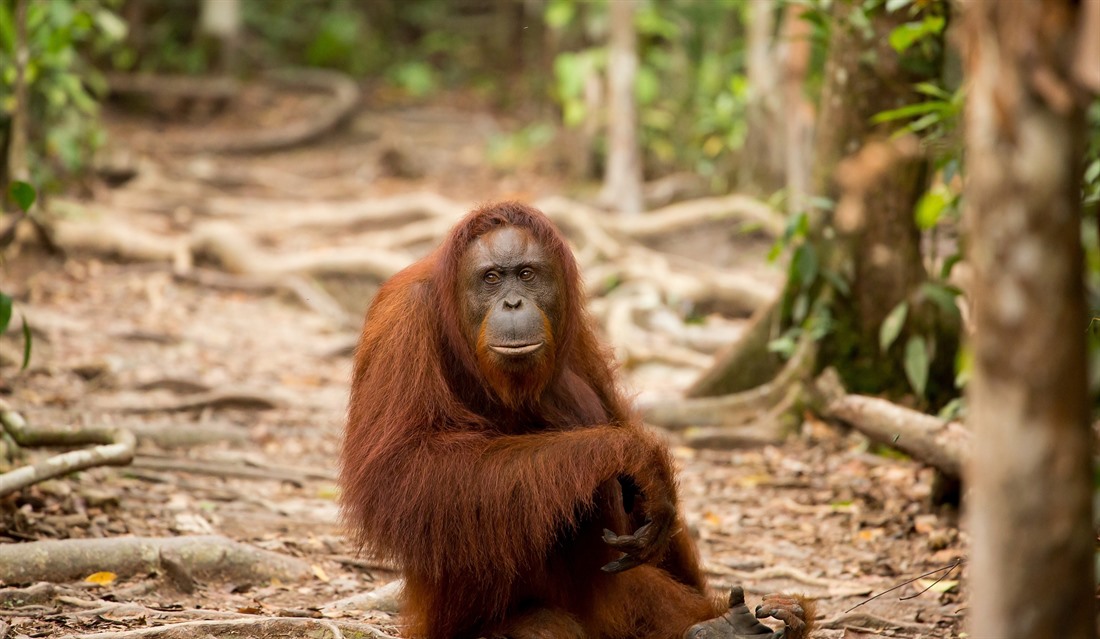
How Many Bornean Orangutans are Left in the Wild?
There are roughly 120,00 orangutans remaining in the wild and, out of three species, the Bornean orangutan is the most numerous with 104,700 individuals. The Sumatran orangutan, found in North Sumatra and Aceh, has a total population of nearly 14,000, while there are just 800 Tapanuli orangutans, which you'll also find in northern Sumatra.
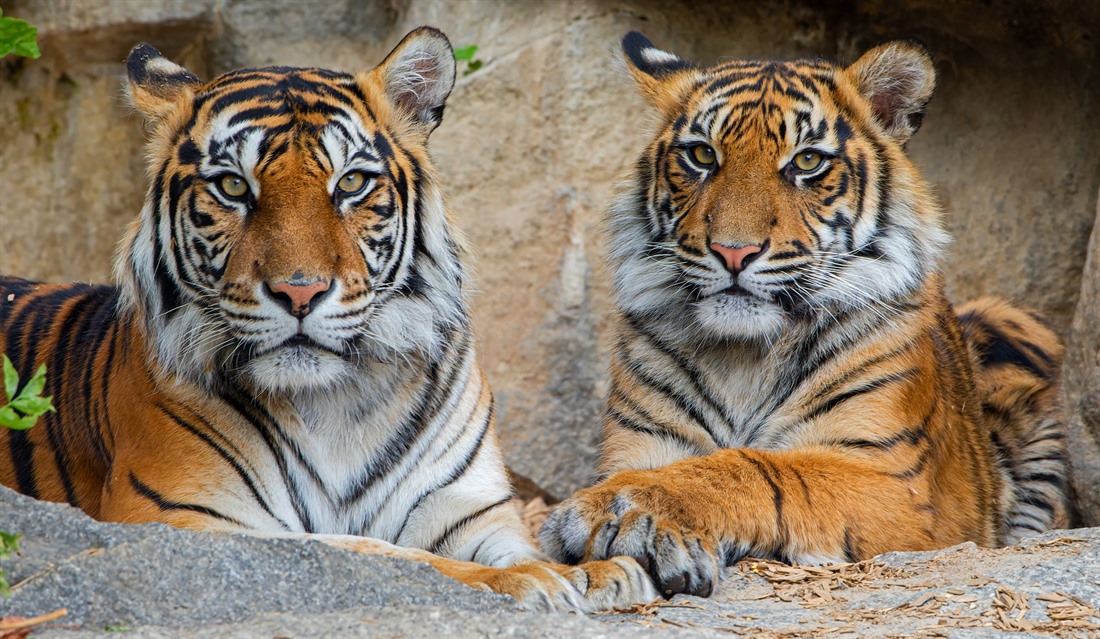
Other Endangered Animals of Borneo
After once being a thriving subspecies, only 400 Sunda tigers exist today. They're tucked away in the remaining patches of the Sumatra forest. Unfortunately, with the continuation of poaching and deforestation, their extinction could be on the horizon. There have been great efforts to help increase tiger conservation, with new laws put in place and antipoaching policies, but the market for tiger parts and products is relentless.
Similarly, the Sumatran rhinos, an animal only found in Borneo, are severely endangered due to habitat loss and fragmentation. The surviving rhinos persist in small, fragmented populations that are non-viable, leading to limited opportunities for breeding and perpetuating the decline in population.
Luckily, WWF (the World Wide Fund for Nature), is working to save these species by fighting wildlife crime and protecting the animal's natural habitats from further harm. They're consolidating the remaining animals into a small number of intensively managed sites while prioritising captive breeding as a conservation approach.
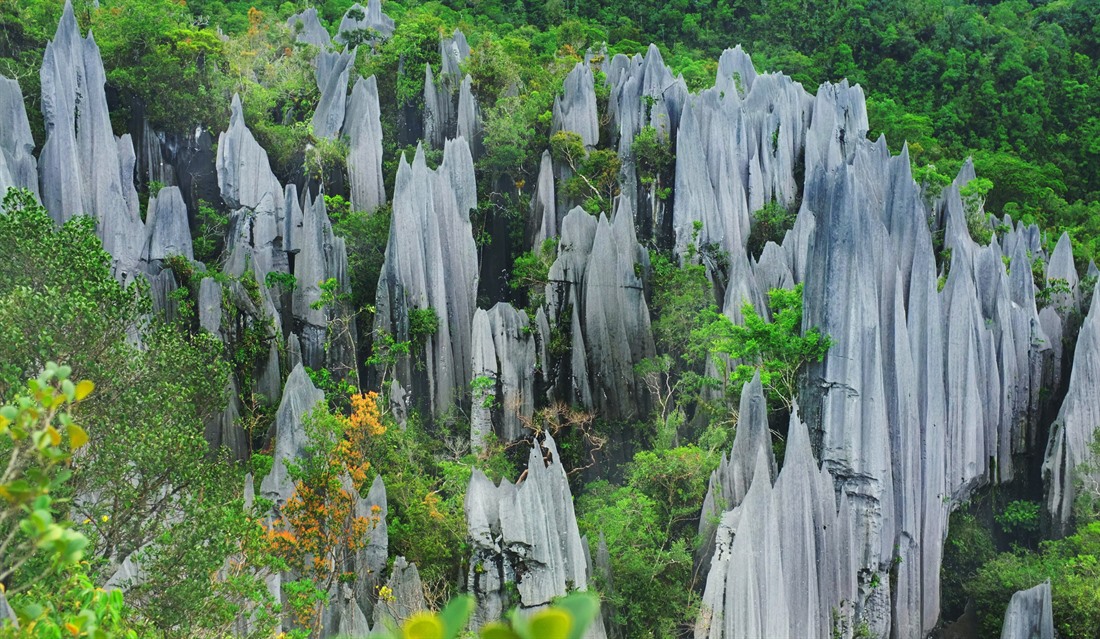
Our Borneo Orangutan Adventures
Borneo Adventures to Hike the Pinnacles
On the Borneo Adventures to Hike the Pinnacles expert-led tour with Regent, you can travel to Semenggoh Orangutan Centre in Siburan to witness the feeding of a small and friendly community of orangutans. Our Travel Specialist Stef recently visited Semenggoh, and described it as 'one of the best spots in the world' to see orangutans swinging from the tree branches! You'll also visit the stunning waterfront of Kuching, and venture into the magnificent Mulu National Park to admire its mighty stalactites and stalagmites.
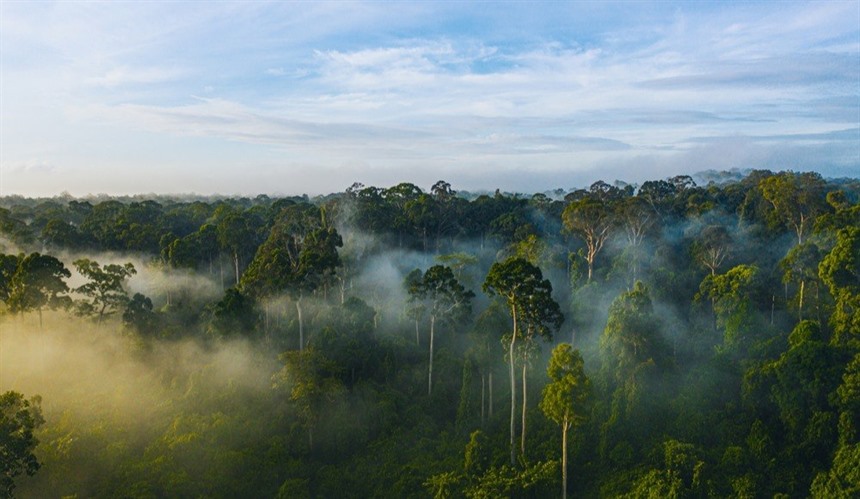
Sabah & Deramakot Forest Reserve Holiday
This Sabah & Dermakot Forest Reserve Holiday takes you to the Sepilok Orangutan Rehabilitation Centre in the Kabili-Sepilok Forest Reserve. Among towering trees and blossoming plant life, you can watch the feeding of the orangutans, and see the juveniles playing in the reserve nursery.
After visiting the centre, you can venture to the Sun Bear Centre across the road, which is home to a small group of rescue bears. Our Travel Specialist Stef went there too, and she watched the bears foraging, climbing and sunning themselves in the forest from the safety of elevated walkways - a simply incredible experience!
This is a wildlife-rich tour, letting you explore the remote Deramakot Forest Reserve, which is home to a wide range of indigenous animals, including gibbons, sambar deer and the rare civet cat. You can also enjoy a cruise along the Kinabatangan River, keeping your eyes peeled for proboscis monkeys, rare hornbills, macaques and elephants.
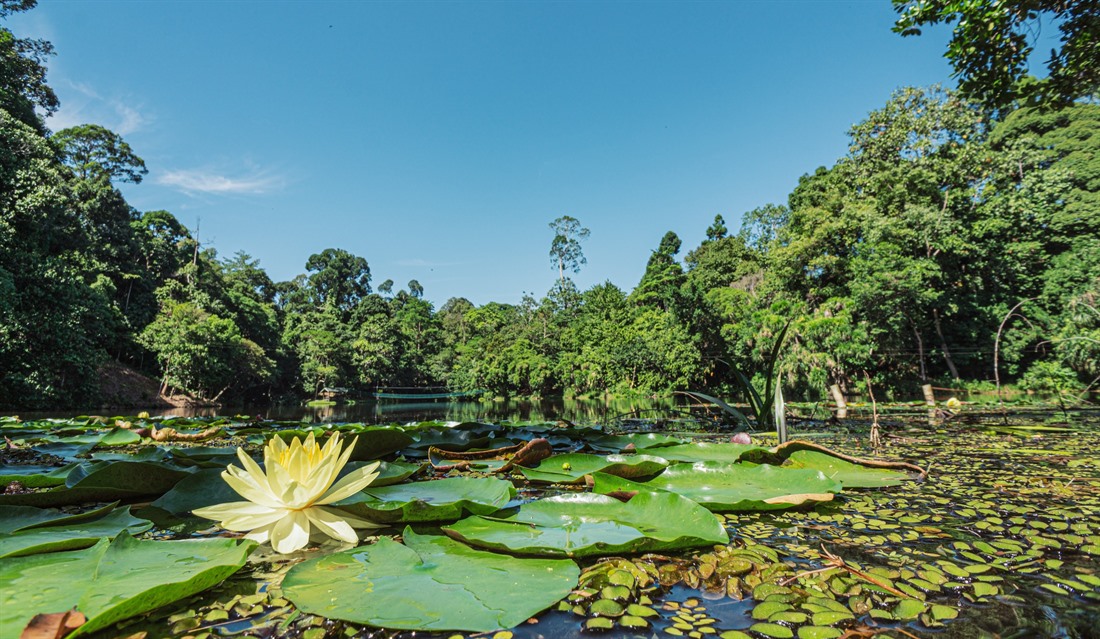
Borneo Orangutan Experience
Travelling with like-minded adventurers, the Borneo Orangutan Experience tour immerses you in the vast landscapes of Borneo, from lush jungle trails to the turquoise seas. You'll spend an amazing afternoon at the Sepilok Rehabilitation Centre watching a group of friendly orangutans enjoying a feeding session. They can get pretty close to you, so it's a great opportunities for photos.
In addition to this incredible experience, you can take on the 300-metre canopy walkway in Sabah, trek the “Coffin Trail” towards the ancient Kadazandusan burial site, and a few river cruises, where wildlife is rife. You can also try some local cuisine with the Abai villagers as company and get involved in their tree planting programme. It's a great way to do your bit for the environment you're exploring.
Ready to explore the rich wilderness of Borneo?
If you're keen to discover the furry faces of Borneo, Regent can help you choose the perfect tour. From river cruises and boat trips to orangutan sightings and strolls along the waterfront, our itineraries help you get to the heart of Borneo's stunning natural landscapes. Contact a Travel Specialist today to find out more.